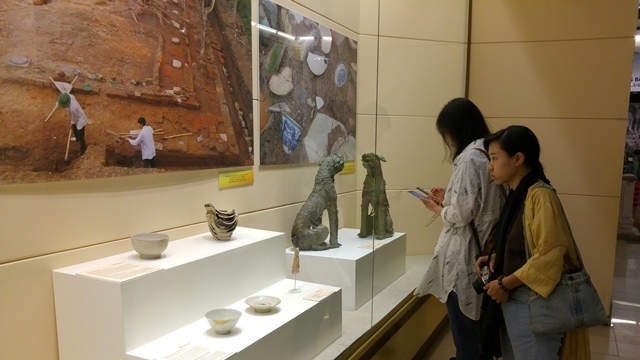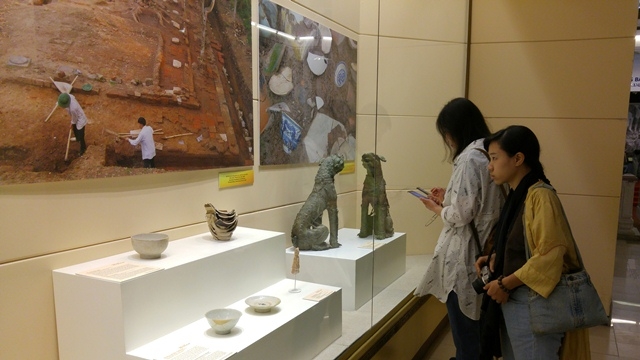



Over 300 artifacts, dating back centuries ago, are on display to tell stories about Vietnamese cultural and historical values.
The event is a continuance of a previous exhibition that ran at three German museums from October 2016 to February 2018 as part of a programme to promote Vietnamese culture and history in the European country.
With over 300 artifacts, this is the first time that such a large-scale exhibit with the largest number of artifacts selected from museums stretching from the North to South Vietnam, has been on display in Germany. Following the tour, the archeological collection continues to be introduced to the public in Vietnam, bring an opportunity to explore the cultural values of Vietnam through three different periods in history.
Each topic contains historical messages, conveyed through the unique artifacts dating back centuries ago.
The prehistoric artifacts display zone showcases tools, stone jewelry and pottery items that were discovered in different prehistoric archaeological sites across the country.
The Metal Age zone features outstanding archaeological items from the three major cultural centres of Dong Son culture in the North, Sa Huynh in the Central region and Dong Nai culture in the South.
Most of the displayed artifacts were made from iron, stone, wood and bronze. Some of them were found in tombs, such as the models and terracotta stoves that were discovered in the northern province of Bac Ninh and Thanh Hoa.
On display are bracelets, string beads, bronze drums, bells and jars from the Dongsonian culture dating back 2,500-2,000 years ago.
A quite unique artifact belonging to the Dongsonian culture is the Chau Can ancient burial, which was found in the suburban Hanoi district of Phu Xuyen in 1974. The coffin was made of logs in two halves as a frame and cover.
The archeological treasures from the first ten centuries AD present evidence of anti-Northern feudal uprisings, demonstrating that the traditional elements of the Dong Son culture were preserved alongside its development and blend of new cultural features.
The Sao Vang drum from the Dong Son culture with decorations reflecting the daily life of the Vietnamese people in the beginning of the state.
The treasures from the Champa Kingdom and the UNESCO-recognised My Son Sanctuary are also introduced with a large number of antiques related to the architecture, stone sculpture and bronze and pottery products, as well as objects for worshiping made from gold and silver, reflecting the characteristics of the ancient Champa society.
Lion statues are popular in Champa stone sculpture.
Complex decorative tiles reflect the skills of the ancient craftsmen.
Artifacts reflect the vibrant activities of the ancient Champa society.
The new findings of the Vietnamese archeologists that are on display are gold and quartz lingas, dating from 8th - 9th century, found in Cat Tien, Lam Dong province. The lingas are small and made of gold and quartz that are very rarely encountered elsewhere.
A tiny gold linga observed through magnifying glass.
Also on display are antiques from Oc Eo - Phu Nam culture in the Mekong Delta region from the 1st to the 7th century.
A lamp from the Sa Huynh culture decorated with elaborate motifs, which could be ceremonial pottery or a symbol of wealth.
The characteristics of the Dong Nai culture are introduced through the objects from several prehistoric archaeological sites in the South.
Animal statues are believed to be a sacred object used in rites that have never been encountered in any other sites in Southeastern Vietnam. They were recognised as a National Treasure in 2013.
Other highlights are archaeological treasures from the feudal Vietnamese dynasties, including citadel vestiges, tiles decorated with mandarin-duck statues, brick, and Chu Dau pottery excavated from a shipwreck in the sea of Cham Islet, Hoi An, Quang Nam province, in 1997-1999.
Chu Dau pottery.
A decorative material statue of the Ly - Tran dynasties.
Tiles decorated with mandarin-duck statues.
Source: NDO